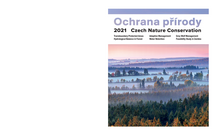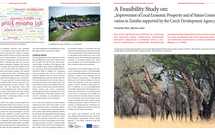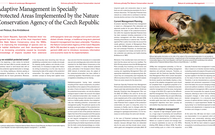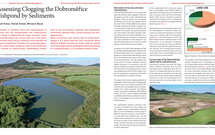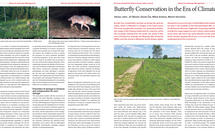Nature Conservation 3/2010 — 22. 6. 2010 — On Nature in the Czech Republic — Print article in pdf
The Koněprusy Caves, an Open Book of Geology, Palaeontology, Mineralogy, Karsology
Otevřená kniha geologie, paleontologie, mineralogie, karsologie
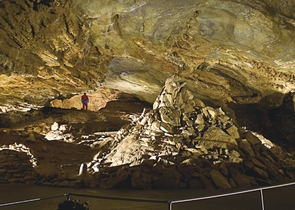
In 2010, 60 years have passed since the discovery of the Koněprusy Caves, the biggest cave system in Bohemia, and 51 years since their part became a show cave.
In 1972, the site with caves was declared a protected area. At present, both the Koněprusy Caves showing and protection is carried out by the Cave Administration of the Czech Republic, established by the Ministry of the Environment of the Czech Republic. The caves were formed within the worldwide famous geological phenomenon – a Lower Devonian cliff. The total length of the caves is more than 2 km, the difference in level (depth) between two parts of a cave system, namely the highest and lowest known points (denivelation) being approx. 70 m. The caves are structured into three cave floors: lower, middle and upper. The Koněprusy Caves history as well as their morphology reflects a polycyclic development of the Bohemian Massif. In the Prošek Dome, 1.5 million year old bones of small fossil vertebrates had lain, together with dropped karst decoration of the oldest generation. Remains of modern humans (Homo sapiens sapiens) were also found there: radiocarbon analysis dated them back to 12 870 ±70 BP, which corresponds with human settlement in the Český kras/Bohemian Karst during the Magdalénian period. In the second half of the 15thcentury, there was a secret forgery workshop on the upper level. The caves include the most complete series of karst decoration in the Český kras/Bohemian Karst. At some sites, the decoration is covered with apatite covers. In the oldest generation, opal is macroscopically apparent: the mineral locally occurs together with gypsum and aragonite. The opal-bearing decoration is in the almost whole height range in the caves. In the caves, 10 bat species have been found. In winter, the most numerous colony of the Lesser Horseshoe Bat (Rhinolophus hipposideros) in the Český kras/Bohemian Karst hibernates there. A cave trail passes through parts of the middle and upper storeys, reaching in total 620 meters in length. Approx. 100,000 tourists visit the caves each year.
Název připojené galerie
Quisque egestas velit non nulla fermentum, aliquet pharetra nunc malesuada. Nullam molestie vel diam non tincidunt. Sed pulvinar lacinia nunc et consectetur. Duis varius leo ac ex scelerisque, ullamcorper eleifend massa consectetur. Nullam in metus ac arcu pellentesque venenatis ac id lorem. Nulla nec ipsum sed enim sodales blandit a sit amet ex.



